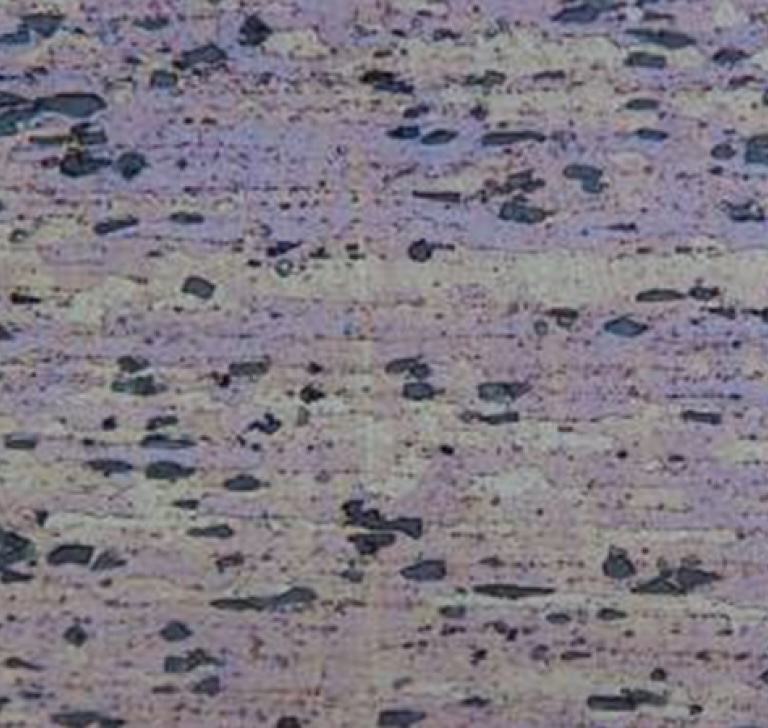Aluminum Alloy With Wear Resistance Ability
The addition of hard ceramic particles or fibers in the aluminum base Al-MMC composite material is an important method of improving not just the wear resistance of aluminum but also its rigidity and strength. Important applications include high-quality cars and high-speed rail vehicle disc braking systems. Compared with traditional cast iron disc brakes, the benefits of lightweight aluminum alloy are obvious given the high specific heat of aluminum and a typical heat transfer coefficient of 5.3 times that of iron. Thus, in practical applications, the temperature of contact surfaces is lower. These are the main reasons that these Al- MMC composite materials should be the material of choice in modern disc brakes. However, Al-MMC composite materials are not normally used in large quantities because the price remains high.
AMSpec has made an MMC plate (Fig. 1) of 7000 series + SiC particles. This innovative material product is made by powder metallurgy (P/M) techniques, along with AMSpec extruded round rods, rolled and heat treated. The grain size of SiC particles shown in the figure is about 2~8μm and is evenly distributed in the aluminum base. In the attempt to replace a titanium alloy used in golf clubs, we achieved significant weight reduction, excellent anodized color and much more.

Figure 1: The MMC plate of 7000 series with Sic particles addition

Figure 2: AMSpec developed aluminum alloy of PM wear-resistance sheet with micro particles addition. OMx400
In conducting our research to improve the wear resistance of bicycle parts such as bicycle chainrings, we rank materials by their improved strength. AMSpec aluminum alloy sheets are ranked in the following order: G480 (480MPa) – 7050 (570MPa) -7150 (600MPa) -7×55 (>630MPa) etc. The tensile strength of the traditional aluminum alloy is increased by more than 1.4 times from 480MPa of 2014. But the hardness (HRB80 to 94) is still much lower than the chain (HRC60). When the two are in contact aluminum wear resistance is still insufficient.
By using alloy addition technology, AMSpec and THT(Taiwan Hodaka Technology Inc.) have developed an aluminum alloy wear-resistant plate (called PM plate) with micron particles of 2~5μm added and a target thickness of 3~4mm. The width is 160~220mm, the tensile strength is above 430MPa, the corrosion resistance better than Duralumin, and in addition is easily anodized. This material can be used to produce high quality, reliable, long-lasting, highly wear-resistant parts with uniform composition.
Based on the strength and volume percentage of added particles to evaluate the wear resistance ability of PM plate, the strength of CuAl2 particles is 3900MPa, NiAl3 is 6000~7600MPa, Si is 7000~14200MPa. Wear resistance is expected to be more than double that of 7050 alloy with strength of about 570MPa.


